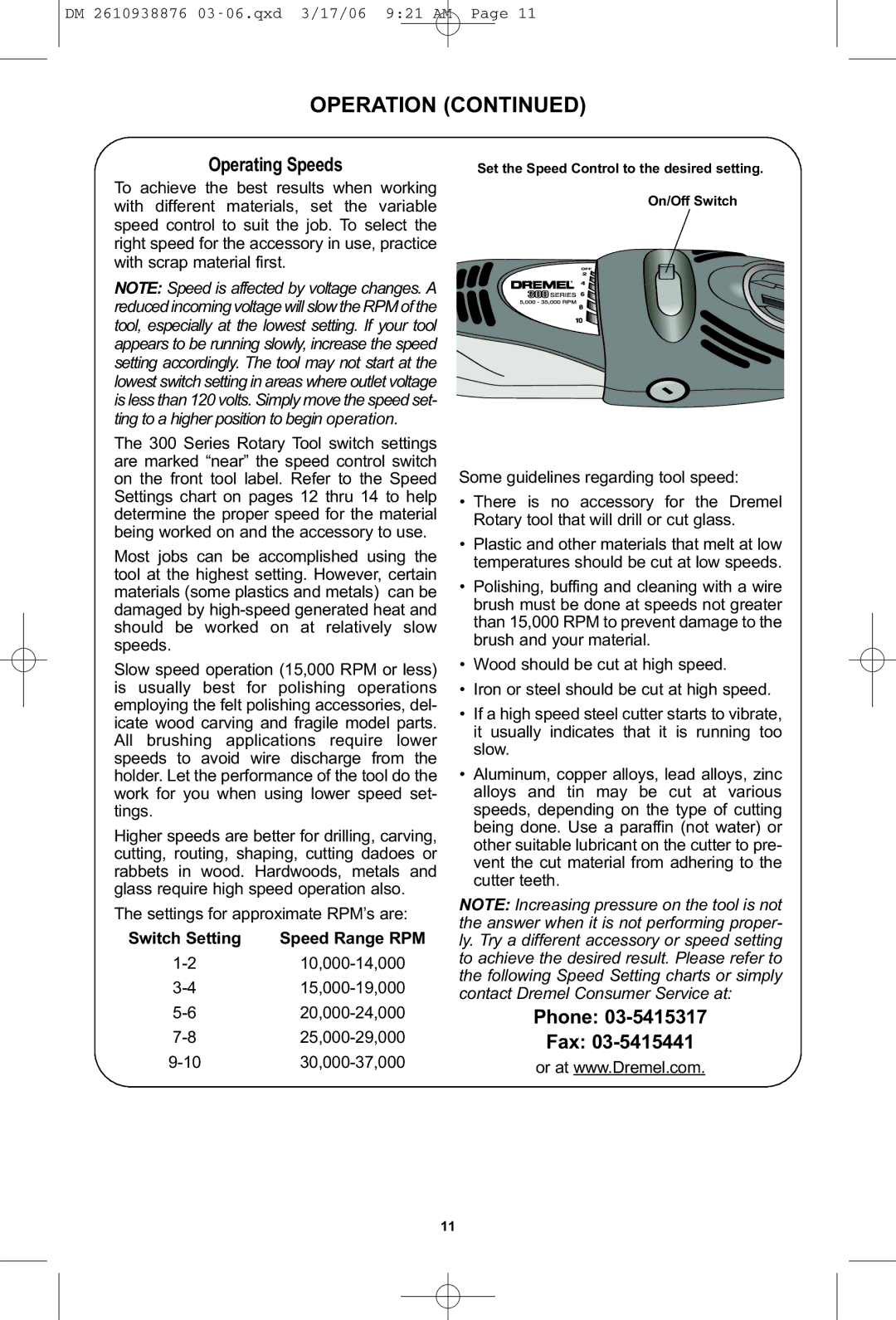
DM 2610938876
OPERATION (CONTINUED)
Operating Speeds | |
To achieve the best results when working | |
with different materials, set the variable | |
speed control to suit the job. To select the | |
right speed for the accessory in use, practice | |
with scrap material first. | |
NOTE: Speed is affected by voltage changes. A | |
reduced incoming voltage will slow the RPM of the | |
tool, especially at the lowest setting. If your tool | |
appears to be running slowly, increase the speed | |
setting accordingly. | The tool may not start at the |
lowest switch setting in areas where outlet voltage | |
is less than 120 volts. Simply move the speed set- | |
ting to a higher position to begin operation. | |
The 300 Series Rotary Tool switch settings | |
are marked “near” the speed control switch | |
on the front tool label. Refer to the Speed | |
Settings chart on pages 12 thru 14 to help | |
determine the proper speed for the material | |
being worked on and the accessory to use. | |
Most jobs can be accomplished using the | |
tool at the highest setting. However, certain | |
materials (some plastics and metals) can be | |
damaged by | |
should be worked on at relatively slow | |
speeds. |
|
Slow speed operation (15,000 RPM or less) | |
is usually best for polishing operations | |
employing the felt polishing accessories, del- | |
icate wood carving and fragile model parts. | |
All brushing applications require lower | |
speeds to avoid wire discharge from the | |
holder. Let the performance of the tool do the | |
work for you when using lower speed set- | |
tings. |
|
Higher speeds are better for drilling, carving, | |
cutting, routing, shaping, cutting dadoes or | |
rabbets in wood. Hardwoods, metals and | |
glass require high speed operation also. | |
The settings for approximate RPM’s are: | |
Switch Setting | Speed Range RPM |
Set the Speed Control to the desired setting. On/Off Switch
Some guidelines regarding tool speed:
• There is no accessory for the Dremel Rotary tool that will drill or cut glass.
• Plastic and other materials that melt at low temperatures should be cut at low speeds.
• Polishing, buffing and cleaning with a wire brush must be done at speeds not greater than 15,000 RPM to prevent damage to the brush and your material.
• Wood should be cut at high speed.
• Iron or steel should be cut at high speed.
• If a high speed steel cutter starts to vibrate, it usually indicates that it is running too slow.
• Aluminum, copper alloys, lead alloys, zinc alloys and tin may be cut at various speeds, depending on the type of cutting being done. Use a paraffin (not water) or other suitable lubricant on the cutter to pre- vent the cut material from adhering to the cutter teeth.
NOTE: Increasing pressure on the tool is not the answer when it is not performing proper- ly. Try a different accessory or speed setting to achieve the desired result. Please refer to the following Speed Setting charts or simply contact Dremel Consumer Service at:
Phone: 03-5415317
Fax: 03-5415441
or at www.Dremel.com.
11
